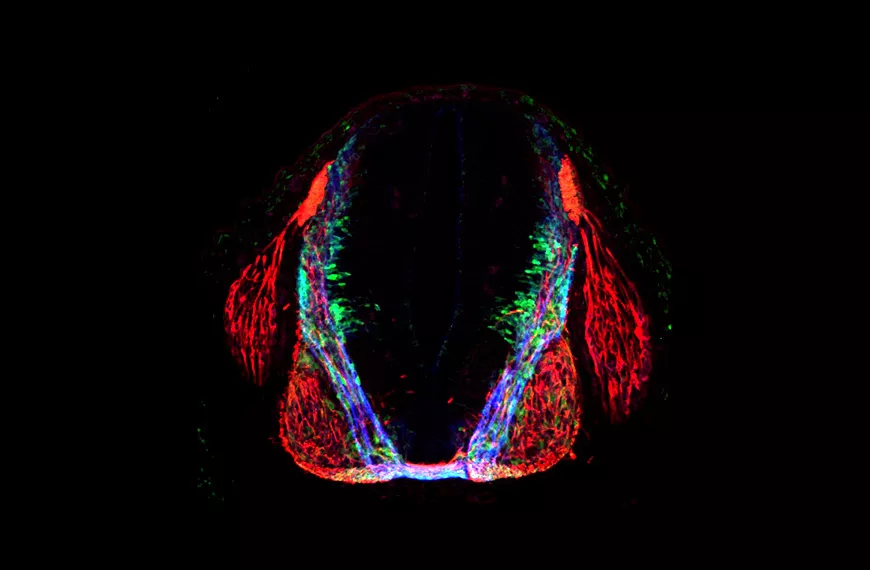Development and function of the vertebrate visual system
Achieving complete understanding of neuronal circuit development and function in an intact behaving animal is a major goal of modern neuroscience. To address this important question our group examines neural circuit formation and activity in the visual system using the zebrafish model system. We focus our analysis on the retinal ganglion cells, the cells connecting the retina to the brain, and on the main retinorecipient area of the zebrafish brain, the optic tectum.
Presentation
The visual systems has a major role in many animals, allowing the processing of sensory stimuli (eg.: identifying predators or prey) in order to elicit a proper behavioral response. This requires the coordinated development of several neuronal cell types that have to work in parallel neural circuits to process several features of the visual input. Our projects are focused on the study of the visual system and we use zebrafish embryos and larvae as a model to understand the complex interplay of molecules that regulate the formation of proper synaptic connections in the brain. In parallel we are also analyzing how these neural networks function together to produce behavior in response to visual stimuli. The zebrafish larva offers an ideal system to explore these questions in an intact vertebrate. First of all, the zebrafish brain is much smaller (< 1mm) than that of mammals, while being equally well differentiated. Importantly, the larval fish brain is translucent and therefore entirely optically accessible.
We are interested in understanding the molecular control underlying the development of connections between the retina and the visual processing areas of the brain such as the optic tectum. We are interested in the role of microtubule- and actin-based intracellular transport in this process, focusing also on their relevance to neurodegenerative pathologies in humans. In addition, we are looking at the role of a novel family of secreted proteins called meteorin and meteorin-like that may contribute to the development of axons crossing the midline of the nervous systems (commissural axons). Finally, we have identified a novel population of commissural neurons in the zebrafish visual system and we are dissecting their role in shaping the binocular properties in our favorite animal model.


Research areas
Axonal transport, neuronal development and neurodegeneration.
Meteorin and Meteorin-like protein receptor(s) and their functions in neuronal development.
Binocular properties of tectal neurons and the role of intertectal connectivity in this neural circuit activity during prey capture.
Team members
Scientific publications
Below you will find the latest scientific publications in this field: Development and function of the vertebrate visual system.










